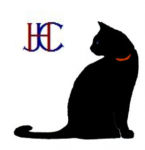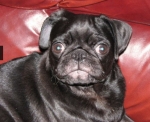Here's some similar links put together by Robysue. They contain a fair amount of info regarding PR machines.
viewtopic.php?f=1&t=111653#p1072131
robysue wrote:Folks,
This post is really a bookkeeping post for me that includes some links to documents that relate to certain topics that seem to come up on a regular basis. And I can't always find them when I want them, so I'm making a post that I'll be able to search for.
C-Flex, C-Flex+, and A-Flex and how they lower the pressure: See http://advancemedical.cl/pdf/PR-REMstar ... Manual.pdf. This is a pdf of the PR System One (Series 50) Provider Manual. Page 7 describes Flex in its full complexity. And it also states:When A-Flex (C-Flex+) is enabled, it enhances patient comfort in three ways: 1) by smoothing the transition between the end of inhalation and the beginning of exhalation, 2) by providing significant pressure relief during the beginning of exhalation, and 3) by reaching an end exhalation pressure of no more than 2 cm H2O below the high point of inspiration.
The PR System One (and I assume the DreamStation's) definitions for scoring events: See http://advancemedical.cl/pdf/PR-REMstar ... Manual.pdf. The definitions are on page 8. Briefly, the definitions are:
The best documented bench testing of the PR, Resmed, F&P, and Coviden Auto algorithms is unfortunately from 2009 and hence it uses the PR M-Series, Resmed S8, F&P SleepStyle220, Coviden Sandman machines. Certainly some updating of the algorithms has been done on subsequent generations of autos from these manufacturers, but at least in the case of PR and Resmed, the current algorithms have been designed with many of the same basic underlying principles. The bench test can be found at http://www.sleepreviewmag.com/2009/09/a ... -pressure/
- Apnea. The PR scores an apnea when there is an 80% reduction in airflow for >= 10 seconds (or no airflow for >= 10 seconds); the PP are used to distinguish whether the apnea is scored as an OA or a CA
- Hypopnea. The PR scores a hypopnea when there is a 40-80% reduction in airflow for >= 10 seconds
- RERA. The PR scores a RERA when the criteria for scoring an apnea or hypopnea are not met, but there is a sequence of breaths that exhibit both a subtle reduction in airflow and progressive flow limitation and this breath sequence is terminated by a sudden increase in airflow along with the absence of flow limitation. (The "sudden increase in airflow" are the large "recovery breaths" that are indicate the high probability that an EEG arousal did occur.)
- Periodic Breathing. PB is defined as a persistent waning and waxing breathing pattern which repeats itself for a period of time between 30 and 100 seconds, and the nadir of the breathing pattern is characterized by at least a 40% reduction in airflow from an established baseline flow. The pattern must be present for several minutes before it can be identified as periodic breathing. This makes it sound like you should expect an H or an apnea to be scored in the nadir, but in practice that doesn't always happen. There may be something more subtle going on in terms of scoring events when the machine flags PB.
- Flow Limitation. To score FLs, the guide says that machine looks for relative changes in the peak, flatness, roundness, or shape (skewness) of the inspiratory portion of the airflow waveform. These changes are observed both over a short period of time (groups of 4 breaths) and over a long period of time (several minutes). Statistical measures are used to help minimize false event detection while allowing the device to be sensitive to even small changes.
- Snores. Unfortunately this document does not provide any illumination on the difference between what we now think of as VS1 and VS2 snores due to JediMark's hard work. There is this cryptic note about snoring however: "Vibratory snore is disabled at pressures greater than 16 cm H2O." I wonder if that means that snores are not recorded at pressures above 16 or if it means that the machine does not increase the pressure in response to snoring when the pressure is above 16. Is there anybody using a PR System One Auto at pressures > 16 who can share some insight into what their machine does?
There is a current 2015 benchtest at http://openres.ersjournals.com/content/ ... 5.full.pdf, but it does not go into as much depth as the 2009 study does.
The PR Search Algorithm is documented in some detail from this old PR web page https://www.usa.philips.com/b-dam/b2bhc ... 0FINAL.pdf It's written for the old M-series, but it seems that PR still uses much the same "Search" algorithm today.
Details about the Resmed S9 AutoSet algorithm are found in this white paper from Resmed: http://www.resmed.com/fr/assets/documen ... -paper.pdf. My guess is that most of the changes between the S9 and the new A10 are minor, with the exception of the RERA detection in the new "AutoSet for Her" mode, which was introduced in the S9 AutoSet for Her model a couple of years after this paper was written.
Details about the AutoSet for Her algorithm can be found in this white paper from Resmed: http://www.resmed.com/us/dam/documents/ ... orithm.pdf
Event Scoring and Machine Response to Events. There is a table in a new white paper at the NIH that can be found at http://www.ncbi.nlm.nih.gov/pmc/article ... der-8-425/ that is chock-full of all kinds of technical information about the criteria that Resmed, PR, and DeVilbass machines use to detect apneas, hypopneas, and flow limitations. The table also included detailed information about how each of the Auto algorithms respond to apneas, hypopneas, flow limitations, and snoring.
A recent white paper from NIH that is titled Treatment of sleep-disordered breathing with positive airway pressure devices: technology update can be found at http://www.ncbi.nlm.nih.gov/pmc/articles/PMC4629962/. It looks at some of the different kinds of PAPs that are out on the market. There's also some very technical information about how Resmed and PR machines detect the start of inhalation and the start of exhalation, which is critical in tracking and following our breathing when implementing exhalation relief or when using bilevel. This paper has a really useful
I'm also adding some links to a couple of papers that I don't have time to read now, but I also don't want to lose the links for.
Here's a 2014 paper in the Journal of Clinical Sleep Medicine that is about using APAP and home testing for OSA. https://go.aastweb.org/Resources/journa ... bfeb15.pdf
Information about the current AASM rules for scoring hypopneas seems to be included in these two links: The upshot seems to be that the AASM wants to move towards one common definition for scoring hypopneas on PSGs, but there's been enough push back from Medicare and other insurers to force the AASM to continue to accept the "old" standard.
In short: The recommended standard for scoring a hypopnea now requires both of the following:Medicare and some other insurers still insist on a 4% drop in O2. A smaller drop in O2 or an EEG arousal without an O2 desat won't count. Hence labs are still allowed to use the "4% O2 desat" rule for scoring hypopneas.
- A reduction in airflow of at least 30% from baseline that lasts at least 10 seconds
- Either an associated 3% drop in O2 OR an associated EEG arousal at the end of the event
A new paper on Research Gate (which I think you can get to even without logging in) entiled New Approaches to Diagnosing Sleep-Disordered Breathing at https://www.researchgate.net/publicatio ... _Breathing has some useful information about what's being done in terms of home testing.










